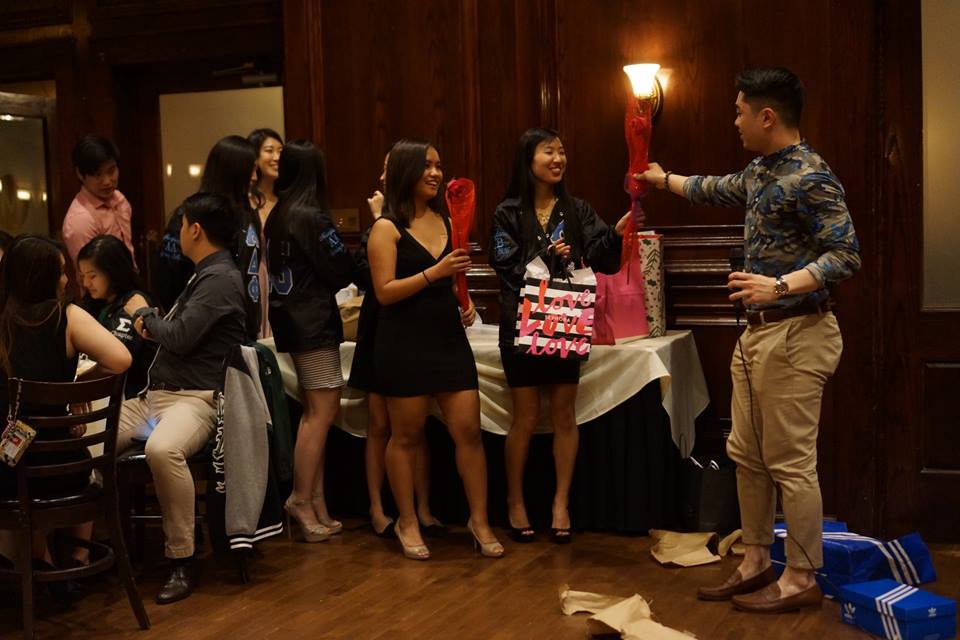Views expressed in opinion columns are the author’s own.
Within the first month of my freshman year of college, I found myself in a random classroom, painting coffee mugs and trying to make a good impression on a group of Asian girls who were strangers to me. We laughed about boys and tried not to get our hands dirty.
If you had told me I’d end up joining the University of Maryland’s chapter of alpha Kappa Delta Phi, an international Asian-interest sorority, I would have laughed in your face — especially if you informed me that the DIY mug-painting event would solidify my desire to join aKDPhi.
See, I was not a “sorority girl.” And the last thing I wanted to do was join an exclusive, Asians-only social club. I didn’t want to be a product of “self-segregation.”
Self-segregation is what you see in Mean Girls, when Janis Ian introduces Cady Heron to the racially divided cliques in the cafeteria during lunch. Janis maps out the room like an explorer surveying entire countries, subtly reinforcing the notion that people of the same race have natural tendencies to hang out with each other.
Few people discuss self-segregation. It’s the looming elephant in the room, especially on college campuses where young individuals are learning how to live in the real world. Because of the prominence of “segregation,” the term doesn’t sit well in a lot of people’s mouths.
The Atlantic’s Catherine Green reprinted an email she received from one of her readers who grew up in Europe detailing the reader’s experiences with self-segregation in college. “If you only associate yourself with people who look like you, there are a lot of people who won’t be part of the system,” the reader wrote. “And a lot of people who you won’t feel inclined to care about.”
While this is valid, the statement disregards people like me who have found refuge in communities where they have connected with people of similar cultures, backgrounds and upbringings. It tells minority groups — often marginalized people — that it’s wrong to naturally seek those with whom we feel comfortable.
As a first-generation Filipino immigrant in a predominantly white university, I found a home in an Asian-interest sorority. Sure, not all of my sisters were able to identify with my beliefs and practices, but aKDPhi gave me a welcoming feeling of familiarity — one that proved crucial in the weird, limbo state of college.
Self-segregation isn’t the problem. The problem remains embedded in the hostile communities that do not fully understand or empathize with our cultures. They continue to marginalize us through microaggressions and false, post-racial “wokeness.”
Just last week, American University student Taylor Dumpson woke up to bananas hung on miniature nooses all over her campus bearing the words “Harambe Bait” and the letters “AKA.” She was the school’s first female black student government president and was a sister of Alpha Kappa Alpha, an international, historically black sorority.
Former Washington University student Andreas Mitchell wrote about his positive experiences in the mixed-race community, justifying the importance of cultural communities.
“[P]eople of the same identity might also choose to associate on the basis of common interests, beliefs, or practices. Slavery and segregation created minority communities that developed their own customs when they were legally excluded from mainstream society,” Mitchell wrote. “The common attitudes and practices that developed in minority communities under systemic oppression deserve to be protected through minority associations.”
Mitchell also writes that the term “self-segregation” puts some demographic groups “on the defensive,” hindering any progress toward much-needed dialogue.
Rather than making individuals feel like mere numbers in a diversity quota, universities need to foster raw dialogue and face the idea that self-segregation occurs because minority groups are silenced by dominant groups. Colleges need to normalize diversity and address it naturally, rather than flaunting it like a championship trophy. Increased recognition and funding for groups that naturally bring about diversity — such as multicultural Greek organizations — must be on the forefront of any administrative diversity conversation.
I officially became a sister of aKDPhi at the end of last semester. By the beginning of next semester, I will be on our executive board. As much as I previously despised the idea of being a part of an Asian sorority, the experience has given me lifelong sisters, a sense of identity and a community that feels like home every single day. Those who criticize “self-segregating” organizations first need to explore the underlying, institutionalized system that isolates us in the first place.
Maris Medina is a freshman journalism major. She can be reached at marismedina29@gmail.com.



